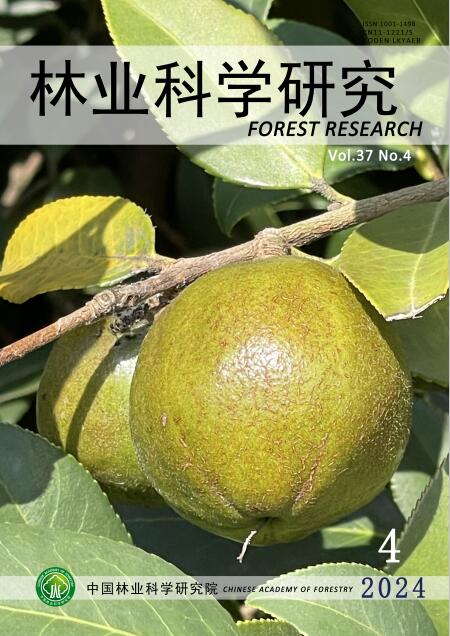墨西哥东北部木本植物叶片化学(色素、表皮蜡和叶片营养物质)的生物多样性综述
Q4 Agricultural and Biological Sciences
引用次数: 7
摘要
树木和灌木的叶子具有多种化学成分,如叶色素、表皮蜡和各种宏量和微量营养素。这些成分影响着物种的生长、发育和生产力以及对环境的适应。对墨西哥东北部30多种木本植物进行的研究结果表明,在色素(叶绿素、类胡萝卜素)、表皮蜡质和宏量和微量营养物质方面存在较大差异,已筛选出几种色素、表皮蜡质和各种宏量和微量营养物质含量较高的物种。叶绿素a较高的种有Ebenopsis ebano(1.755)、Cercidium suveoleon(0.589)、Amyrys texana(1.66),叶绿素b较高的种有Ebenopsis ebano(0.398)、Amyrys texana(1.66),叶绿素总含量(Chl a + b)较高的种有Ebenopsis ebano(2.253)、Leucaena leucocephala(1.687)。类胡萝卜素含量高的种有:黄小檗(0.585)、棕榈叶薯蓣(0.433);表皮蜡质负荷较高的种有:刺叶前(702.04 μg/cm2)、德克萨斯Diospyros texana (607.65 μg/cm2)和杨梅(437.53 μg/cm2)。有必要使这些选定物种的生产力和适应环境的效率保持一致。本文章由计算机程序翻译,如有差异,请以英文原文为准。
Biodiversity in Leaf Chemistry (Pigments, Epicuticular Wax and Leaf Nutrients) in Woody Plant Species in North-eastern Mexico, a Synthesis
The leaves of trees and shrubs possess various chemical components such as leaf pigments, epicuticular wax and various macro and micronutrients. These components influence the growth, development and productivity and adaptation of the species to environments. The results of studies undertaken on the more than 30 woody species in North-eastern Mexico results reveal that there exist large variations in pigments (chlorophyll, carotenoids), epicuticular wax and macro and micro nutrients Several species have been selected with high values of the pigments, epicuticular wax and various macro and micronutrients. For example, species with high Chlorophyll a were: Ebenopsis ebano (1.755), Cercidium suveoleon (0.589), Amyrys texana (1.66), and those with high chlorophyll b were Ebenopsis ebano (0.398), Amyrys texana (1.66) and species with high Chlorophyll total (Chl a + b) were: Ebenopsis ebano (2.253), Leucaena leucocephala (1.687). Species with high carptenoids were: Berberis chococo (0.585), Diospyros palmeri (0.433. The species showing high epicuticular wax load are Forestiera angustifolia (702.04 μg/cm2), Diospyros texana (607.65 μg/cm2), Bernardia myricifolia (437.53 μg/cm2). There is a here is a need to conform the efficiency of these selected species for productivity and adaptation of the species to environment.
求助全文
通过发布文献求助,成功后即可免费获取论文全文。
去求助
来源期刊

林业科学研究
Environmental Science-Ecology
CiteScore
0.90
自引率
0.00%
发文量
4834
期刊介绍:
Forestry Research is a comprehensive academic journal of forestry science organized by the Chinese Academy of Forestry. The main task is to reflect the latest research results, academic papers and research reports, scientific and technological developments and information on forestry science mainly organized by the Chinese Academy of Forestry, to promote academic exchanges at home and abroad, to carry out academic discussions, to flourish forestry science, and to better serve China's forestry construction.
The main contents are: forest seeds, seedling afforestation, forest plants, forest genetic breeding, tree physiology and biochemistry, forest insects, resource insects, forest pathology, forest microorganisms, forest birds and animals, forest soil, forest ecology, forest management, forest manager, forestry remote sensing, forestry biotechnology and other new technologies, new methods, and to increase the development strategy of forestry, the trend of development of disciplines, technology policies and strategies, etc., and to increase the forestry development strategy, the trend of development of disciplines, technology policies and strategies. It is suitable for scientists and technicians of forestry and related disciplines, teachers and students of colleges and universities, leaders and managers, and grassroots forestry workers.
 求助内容:
求助内容: 应助结果提醒方式:
应助结果提醒方式:


